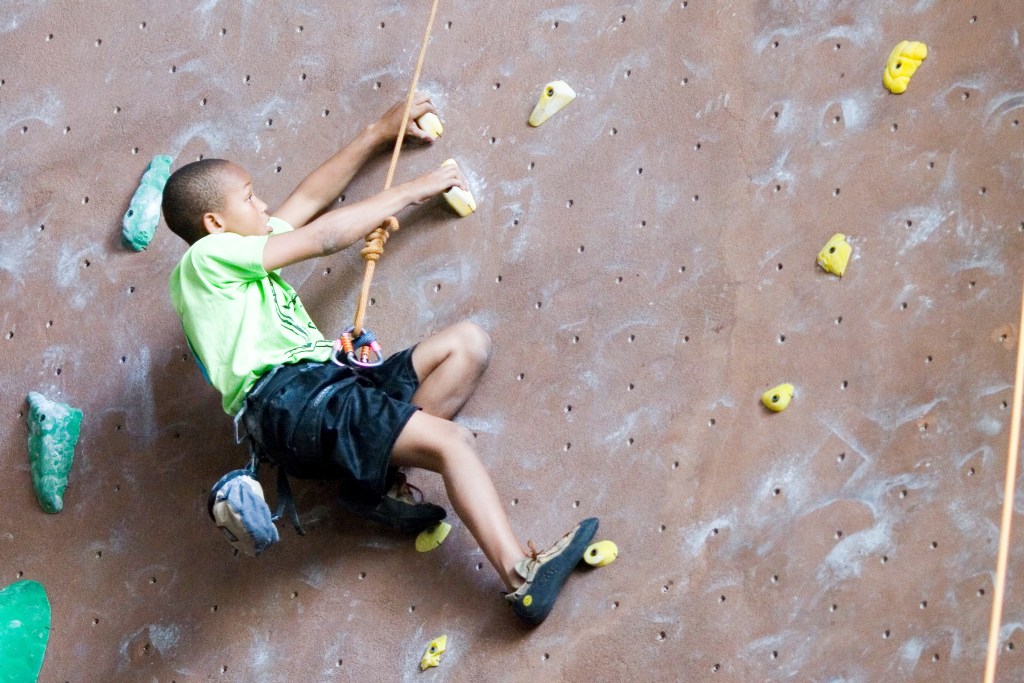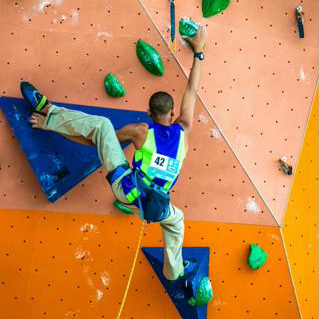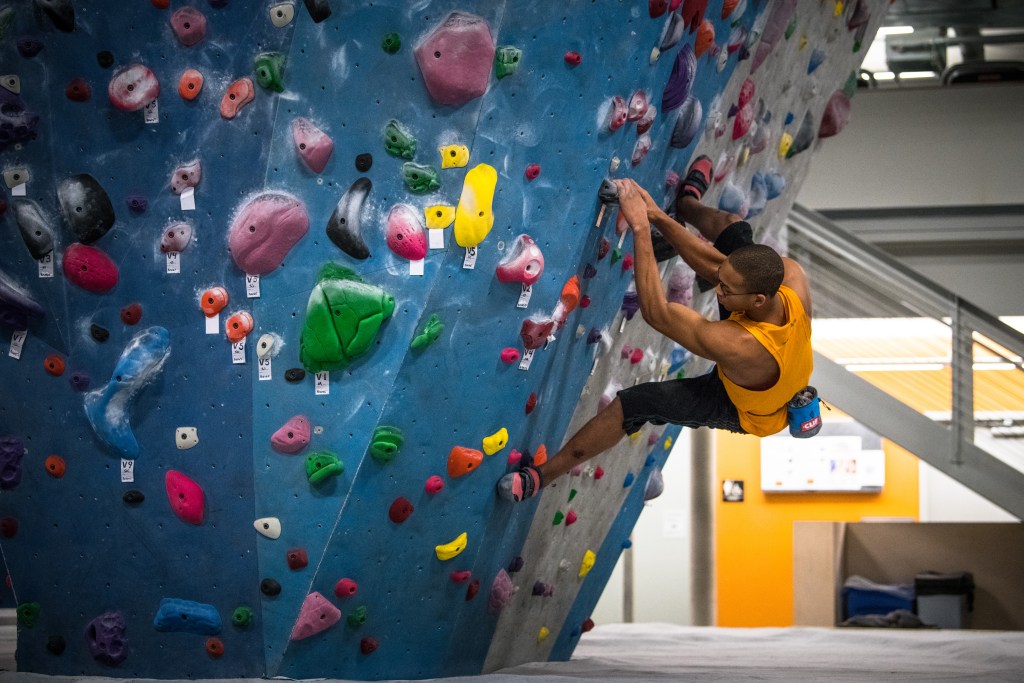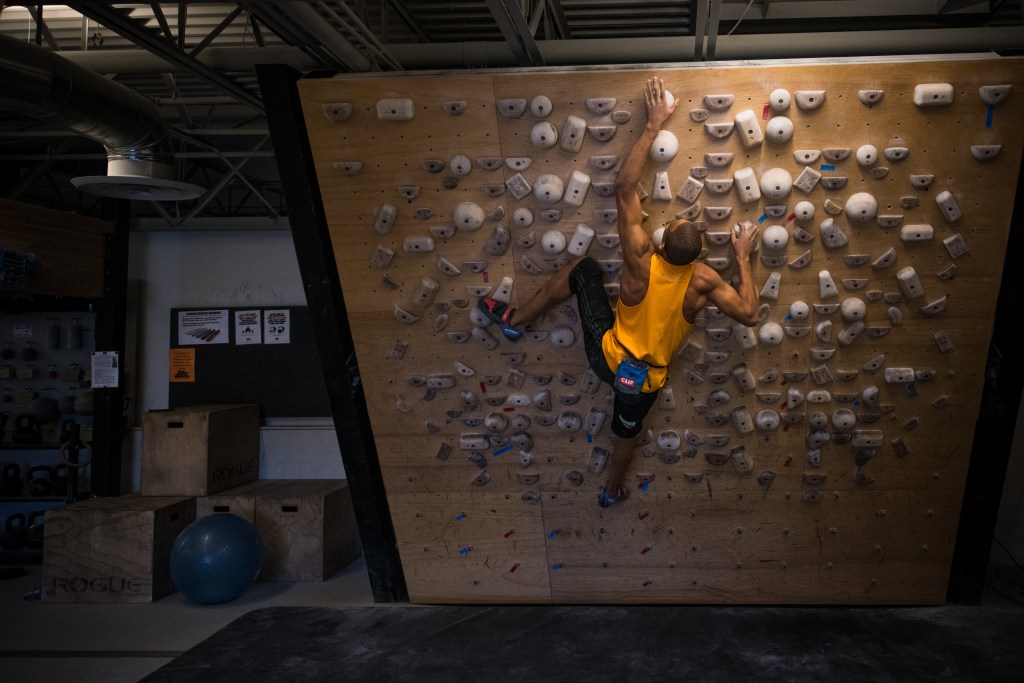No one enjoys failing, especially while under a microscope for others to judge. It’s much easier to set average, easily attainable goals than it is to aim high and venture outside of your comfort zone.
For almost half of my life, I have been put under a spotlight. I don’t like being judged by people who think they know who I am based upon brief encounters or what they see in (edited) interviews. I also hate failing and constantly being met with roadblocks. But I’ve come to discover these things I dislike are inevitably part of my journey to become the best climber I can be.
From the very beginning, obstacles have been just as plentiful as opportunities. Overcoming peer pressure and limited resources were among my first hurdles. When I started rock climbing at age 6, my peers thought I was weird for choosing such an obscure sport. I was often accused of “acting white” and constantly pressured to choose a “real” sport, like basketball and football instead of a dead-end hobby. For a brief moment, I actually considered changing my path, but eventually I learned to ignore the negative opinions of others and instead to pursue my passion for climbing. After all, climbing was the one thing I had always enjoyed, even before I could walk. As a baby, my mom thought baby gates were barriers; I thought they were a jungle gym. Although I had tried many other sports, climbing was the one that clicked.

2008 Youth National Championships
In 2007, I attended my first rock climbing national championships and I was completely in awe of my surroundings. The walls were 50 feet tall, and top climbers were members of huge climbing teams with professional coaches and established training regimens. I had dreams of becoming the best climber in the country, however, I realized my resources were limited. Back at home in Fayetteville, North Carolina, there was one local climbing gym, with 17-foot-tall walls, no professional coaches and no competitive climbing teams. The nearest mountain was four to five hours away. Instead of getting frustrated and abandoning my goals, my determination increased. I found a larger climbing gym 80 miles away in Raleigh, North Carolina, and two professional coaches, Emily Taylor and Shane Messer, who were willing to work with me, despite living six hours and 12 hours away. My circumstances were not ideal, but they were all that I had, so I had to make it work.
By 2010, against many odds, I had accomplished my goal and won my first national championship. Achieving that milestone motivated me to dream bigger and I began researching international climbing competitions. I realized European climbers dominated competition climbing and 1995 was the first (and only) time an American climber had won a lead climbing world championship. When I told others about my new goal, I was constantly reminded of the challenges I would face. Instead of getting discouraged, it inspired me to dedicate myself to becoming the second American to accomplish that feat.
I spent the next few years juggling my school schedule, while traveling regularly to compete and train. I was always the kid studying on airplanes and during competitions. To support my ambitions, my school (and my mom) required me to maintain good grades. By 2013, I had gained international recognition for climbing some of the toughest mountain climbs in the world, and several outdoor companies agreed to help sponsor my adventures.

2014 Youth World Championships (Photo Credit: Eric Buhrfeind)
The following year, at 14, I traveled more than 23 flight hours to Noumea, New Caledonia, to compete in the IFSC Youth World Championships. After three difficult days of competition, I proudly stood on top of the podium during the awards ceremony, earning a gold medal for the U.S. Accomplishing that goal was more than personal for me. I knew I had made my country proud and showed other young climbers that we were just as strong and capable as the rest of the world.
This achievement fueled an even larger goal for me. I had figured out how to be successful on the youth international stage. Now, I wanted to learn how to compete as an adult. 2015 would be the first year I could compete in adult USA Climbing-sanctioned competitions domestically and internationally. I was eager to learn how to rise on the larger, much more competitive stage.
The year started strong: I won the adult national lead climbing championship and traveled to Spain days later and climbed my hardest route to date, Era Vella (9a). Then “it” began to happen. I started growing in massive spurts, 3 to 4 inches at a time. From the outside, people saw my body changes as an advantage: Longer reach meant I could climb things much easier. But from the inside, my body was in complete shock. I had to relearn how to climb in a drastically different frame. And since my muscles, ligaments, tendons and bones did not grow at the same rate, I was much more prone to injury.

Photo Credit: Andy Earl
For two years, growth-plate injuries, tendinitis, avulsion fractures in my back and thumb, and a complete ligament tear in my thumb plagued my climbing aspirations. My goal during that time was simply to maintain fitness. I realized my hands were completely tied until my body slowed down and began to stabilize. After all, I had won my first major adult competition (non-USAC sanctioned) in 2014 when I was 5 feet 6 inches tall and 95 pounds. Continuing to compete at a high level in 2017, at 6 feet 2 inches and 165 pounds, would be a monumental challenge. I went from being one of the smaller climbers at adult national competitions to being one of the largest competition climbers in the world. Moreover, in climbing there is such a thing as being too tall for some climbs. Despite these incredible obstacles, I still managed to win two gold and two silver medals at adult national championships and four silver and bronze medals at youth world championships during this period of tremendous change.
My body growth has seemingly plateaued over the last year.
In June, I graduated as valedictorian of my high school class, and I have a full scholarship to attend Babson College in Boston this fall, following my gap year. And I am more motivated than ever to pursue my goal of representing the U.S. in the 2020 summer games.

Photo Credit: Andy Earl
Throughout my journey, I have had to repeatedly endure many things I strongly dislike, such as overcoming extreme obstacles and constantly being the subject of criticism and analysis. Nonetheless, I am eternally grateful for this path. A path that has brought me around the world and allowed me to experience new cultures and meet incredible people. A path that helped me conquer my fears and overcome tough obstacles. A path with many more experiences, obstacles and success stories to come.
Yes, it is much easier to set average, easily attainable goals in life. However, it is far more exciting to aim high and challenge yourself to experience some of the amazing adventures our world has to offer.
